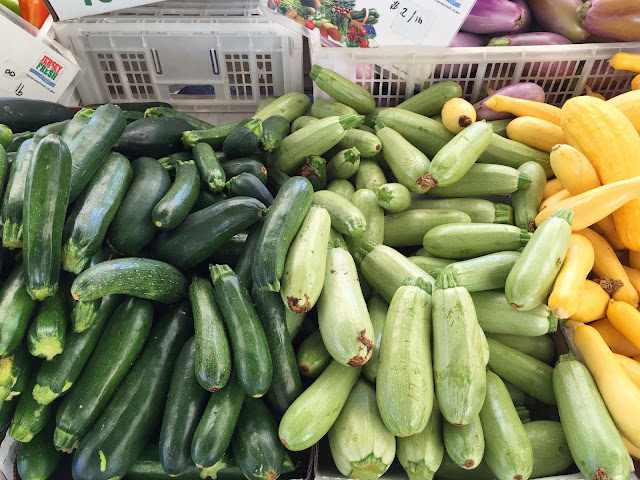Back when our children started going to summer camp, my prince and I decided to finally take a real vacation. The kind without kids. We’d talked about going to England, but whenever we started the planning part, we ran into trouble. Turns out neither of us has that vacation-planning gene. So I proposed what I thought sounded like a great solution.
“Let’s go without reservations,” I said. “We won’t have a plan – we’ll just get up every morning and decide where to go that day!” I thought it sounded exciting. Vacation with a spirit of adventure! A leap into the unknown! A gentle unknown, admittedly – we were only talking about The Cotswolds.
Nevertheless, my hubby the lawyer was horrified. Not know where we’re going?! Not know what we’d have to spend for lodging?! (“Yes, of course, we have a room, Mr. Hilton, but it’s a bit pricey at this late date,” he suggested.) Moreover, he’d spent his entire professional life helping clients eliminate risk, and the idea of running into the burning building seemed, well, insane.
In the end, we compromised. I promised to get reservations just outside of London for the first night, and more reservations at our destination in the Lake District. In between, we’d go the Daniel Boone route.
It turned out to be a great vacation. We saw places we’d never have planned on (“Look – if we turn right up ahead, there’s a 15th century manor house
we can go through”). And at every stop, the hotelier was happy to call ahead in the general direction we were pointed. But I think it’s the last vacation either of us “planned.” Ever since, we’ve relied on well-organized friends who decide where they want to go and what they want to do there, and we jump aboard. We are classic Type B vacation people.
Which is how we ended up on a cruise down the Danube in April. Friends who were already booked were telling us about their plans and I said, “I want a full report when you get back. That’s one of the places we’ve talked and talked about going.”
“Well, why don’t you just come with us,” she said. So we did.
What a trip. For starters, the cruise line, AmaWaterways, did a first-class job. Small boat, really comfortable accommodations, impeccable service, and terrific food. And really knowledgeable guides at each of the towns and cities we visited. We started with three days in Prague, the capital of the Czech Republic and the “City of 100 Spires” – a grand city of baroque architecture – then took a boat from Vilshofen (Germany) to Budapest over the next eight days. (This is only our second cruise, but I love that you only have to unpack once.)
 |
| Prague is one of Europe's most beautiful cities. |
 |
| Heading down the Danube, I had a continuous feeling of being part of a Corot landscape. |
 |
| Durnstein in the Wachau Valley features 16th century townhouses... |
 |
| ...and the blue facade of this church cloister tower is considered the most beautiful in Austria. |
 |
| Tiny Cesky Krumlov looks like it hasn't changed a bit from its medieval origins. |
 |
| Regensburg in Germany features 11th-12th century architecture. |
 |
| Those castle walls in Cesky Krumlov (along the Czech-Austrian border) aren't stones; they're just painted to look that way. It’s a feast of trompe l’oeil (trick of the eye). |
 |
| St. Stephan's cathedral in Passau houses one of the world's largest pipe organs, with 17,774 pipes. |
 |
| Magnificent government buildings dot the downtown area of Vienna. |
 |
| At night, Budapest's government buildings along the Danube are lit like Christmas trees. |
In addition to the many grand structures, I love to focus on small architectural details, like doors and windows.

 And then there’s the food. The Kitchen Goddess has developed a souvenir-buying philosophy designed to minimize the clutter at home: I buy whatever foods are produced locally that are allowed back in the U.S. (I learned my lesson when a customs agent confiscated the Amalfi lemon I’d carefully packed among my sweaters.) So on this trip, I bought chocolate-covered almonds in Prague (sorry – no photo – they’ve long ago been consumed by my friends and me); spicy mustard that’s the specialty of Regensburg, Germany; a bottle of wine from Austria’s Wachau Valley vineyards; and salted apricot kernels and apricot liqueur from the tiny town of Passau, in Germany. (Apparently, apricot trees thrive in the area, and are planted among the vineyards.)
And then there’s the food. The Kitchen Goddess has developed a souvenir-buying philosophy designed to minimize the clutter at home: I buy whatever foods are produced locally that are allowed back in the U.S. (I learned my lesson when a customs agent confiscated the Amalfi lemon I’d carefully packed among my sweaters.) So on this trip, I bought chocolate-covered almonds in Prague (sorry – no photo – they’ve long ago been consumed by my friends and me); spicy mustard that’s the specialty of Regensburg, Germany; a bottle of wine from Austria’s Wachau Valley vineyards; and salted apricot kernels and apricot liqueur from the tiny town of Passau, in Germany. (Apparently, apricot trees thrive in the area, and are planted among the vineyards.) |
| A farmers' market in Prague. Imagine that! |
 |
| The Kitchen Goddess could not resist a stop at the Hotel Sacher, home of the original sachertorte. |
Please don’t be put off by the mention of pumpkin seed oil in this recipe. Styria is an area in Austria, and one of the region’s most famous food products is pumpkin seed oil. Luckily, you don’t have to go to Austria to get some, as many grocery stores with a good selection of cooking oils will carry it; and in a pinch, you can find it at amazon.com. In addition to its use in this recipe, it’s apparently good drizzled on butternut squash soup.

Kitchen Goddess note on Pumpkin Seed Oil: Because the color of the oil ranges from dark green to almost black, it’s called Styria’s “black gold.” To get the oil, the pumpkin seeds are dried, ground up and roasted, a process that creates a distinct walnut flavor. According to Wikipedia, it is also rich in polyunsaturated fatty acids. The color comes from the chlorophyll and carotene in the seed pods. Use it only as a flavoring – you don't want to cook with it, as heat destroys the essential fatty acids.

Styrian Potato Salad
Adapted from Executive Chef Daniel Tanase on AmaWaterways’ ship AmaBella.
Serves 6.
6 medium Yukon Gold potatoes (can substitute red-skinned potatoes or white potatoes)
1 small red onion, minced
¼ cup white wine vinegar or white Balsamic vinegar
¼ cup pumpkin seed oil
½ cup pumpkin seeds
Kosher salt and freshly ground pepper, to taste
Into a large, heavy saucepan, place the potatoes with water to cover by about an inch. Bring to a boil and cook about 30 minutes, or until the potatoes can be easily pierced with a sharp knife.
 While the potatoes are cooking, mince the red onion and marinate it in a shallow bowl with the vinegar. Toast the pumpkin seeds in a small skillet over medium heat until they begin to brown, and set them aside.
While the potatoes are cooking, mince the red onion and marinate it in a shallow bowl with the vinegar. Toast the pumpkin seeds in a small skillet over medium heat until they begin to brown, and set them aside.When the potatoes are done, remove them from the water and allow them to cool until they can be handled. Remove the skins and cut the potatoes into a half-inch dice.
Toss the potatoes with the pumpkin seed oil. Add the marinated red onion and vinegar and mix well. Add salt and freshly ground pepper to taste, and sprinkle with the toasted pumpkin seeds.






















